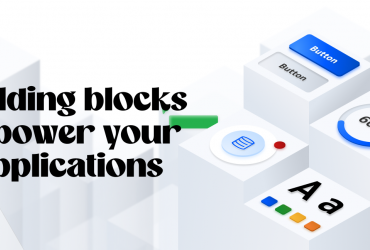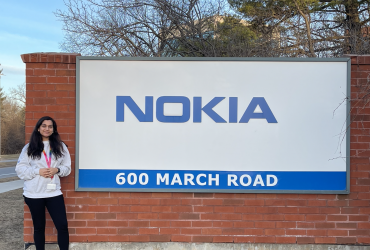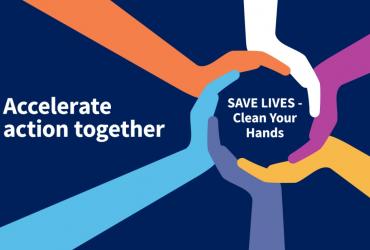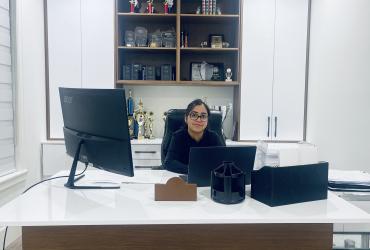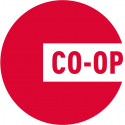Orientation and First Weeks
The orientation process at the beginning of my co-op was notably brief. From the moment of arrival, there was an immediate immersion into the workload, with a reliance on past design experiences as the primary guide. Understanding the workflow and each team member's role became a gradual process over the first few weeks. I would strongly advise future students not to hesitate but to proactively engage with their new environment. Actively connecting with as many people as possible, whether through formal introductions or casual interactions, and establishing a network of colleagues. This early engagement not only accelerates the learning curve but also contributes to a more seamless integration into the professional atmosphere, enabling students to navigate their roles more effectively and make meaningful contributions to the team.
Day to Day
In the rhythm of my daily routine, a central focus is on maintaining clear communication with my supervisor. Each morning, I provide updates on the progress of tasks accomplished the previous day, offering insights into the milestones reached and any challenges encountered. Simultaneously, I outline a plan for the upcoming day, setting the stage for continuous productivity and effective task management.
The cornerstone of my daily activities often involves navigating a significant task, such as the ongoing redesign of the company website. Consequently, a substantial portion of my day is dedicated to approaching various aspects of this task. Whether it's refining the user interface, optimizing responsiveness, or enhancing visual elements, I engage in a meticulous planning process to ensure the seamless progression of the project.
In addition to the overarching project, my daily agenda is flexible enough to accommodate smaller, yet equally important, tasks that arise occasionally. These could include designing brochures, creating presentations, or generating images for social media. This versatility in my daily responsibilities ensures that I not only contribute to the significant ongoing project but also respond promptly to immediate needs, fostering a dynamic and adaptive approach to my role within the company.
Learning and Adaptation
A pivotal component of my adaptation and learning curve during this co-op experience revolved around mastering industry-standard tools. Initially, I heavily leaned on Figma for a variety of tasks, spanning from interface design to brochure creation. While Figma offered versatility, I gradually discerned its limitations in terms of efficiency, especially when dealing with certain intricate design elements and tasks.
Recognizing the need for a more diversified toolset, I proactively undertook the task of incorporating tools like Adobe Illustrator and Photoshop into my workflow. Each of these applications brought a specialized set of features tailored to specific design requirements. Adobe Illustrator, with its vector-based capabilities, became invaluable for creating precise and scalable graphics, while Photoshop's prowess in image editing and manipulation complemented the overall design process seamlessly.
This deliberate integration of industry-standard tools not only broadened my skill set but also played a pivotal role in enhancing my overall productivity. It allowed me to approach different design challenges with a more nuanced and specialized toolkit, ensuring that each tool was utilized for its intended purpose. This adaptability in tool selection not only improved the quality of my designs but also underscored the importance of being versatile and adept in utilizing a diverse range of tools within a professional design context.
Accomplishments and Challenges
One of the significant challenges I faced during my co-op experience was the inherent difficulty in efficiently planning daily tasks, resulting in frequent deviations from my initial objectives. Recognizing the need for a solution, I embarked on the journey of overcoming this obstacle, and through this process, I gained valuable insights into effective task management.
The turning point was the realization of the crucial role that setting clear daily goals played in addressing this challenge. By adopting a proactive approach to my daily workflow, I began delineating specific and achievable objectives at the beginning of each day. This type of planning not only served as a roadmap for my daily activities but also played a pivotal role in keeping me focused on the immediate tasks at hand.
The practice of setting clear daily goals became a cornerstone of my routine, facilitating progress tracking and allowing for a more comprehensive understanding of how each task contributed to the overarching objectives of the project. This structured approach not only improved my time management skills but also ensured a higher degree of alignment with the broader project goals, leading to a more cohesive and purposeful workflow.
In essence, overcoming the challenge of task planning became a transformative experience, highlighting the importance of proactively setting and managing daily goals for a more focused, organized, and productive professional routine.
Wrap Up
My initiation into the world of co-op surpassed my initial expectations, offering a profound and insightful glimpse into the dynamics of working within a professional setting. The transition, initially perceived as potentially intimidating, unfolded with a surprising ease as I discovered striking similarities between this professional environment and my experiences collaborating on projects with fellow students.
Contrary to my initial concerns, the atmosphere within the professional realm felt remarkably familiar. The collaborative nature of the projects, the emphasis on effective communication, and the shared commitment to achieving common goals echoed the dynamics of group projects taken within SIAT. This realization was particularly reassuring, as it allowed me to seamlessly integrate into a situation that closely mirrored the collaborative environments I was accustomed to.
By recognizing these parallels, I not only overcame any apprehensions but also found a comfort zone that fostered a smoother transition into the professional landscape. This unexpected alignment between my academic experiences and the professional realm not only contributed to my confidence but also highlighted the transferability of skills and collaborative approaches honed during my academic journey. Overall, this co-op experience not only met my expectations but allowed me to thrive in a work situation that resonated with the collaborative spirit I am accustomed to.










